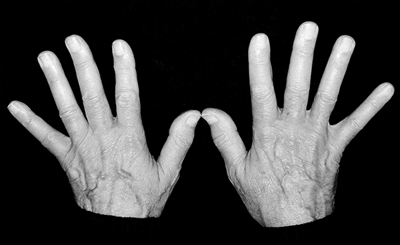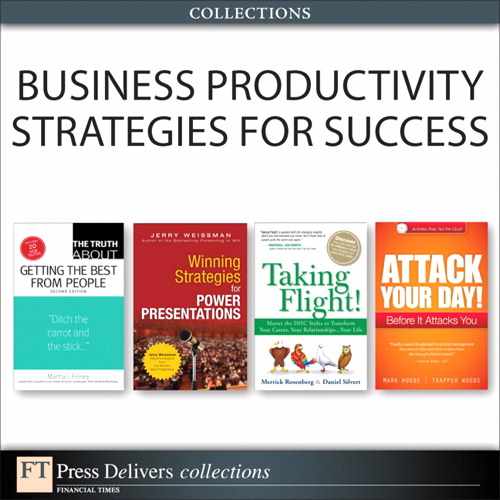51. “What do I do with my hands?”
A Simple Approach to Gesturing

For the more than two decades I have been a presentation coach, the most frequently asked question (until now, but more about that in Chapter 54, “Rx: CrackBerry Addiction”) has been, “What do I do with my hands?”
The answer is to use your hands to illustrate your words. But that seemingly simple instruction can lead to overkill if a coach or a presenter attempts to choreograph gestures. Choreography makes presenters feel like performers and worse, overloads them, as if asking them to pat their heads and rub their tummies at the same time.
An apocryphal story about Richard Nixon (who, after his historic presidential debate with John F. Kennedy, was forever identified as a notoriously stiff presenter) has it that he was coached to choreograph his gestures by writing prompts in the margin of his speech text. But, the story goes, Mr. Nixon lagged between his words and his gestures. He would say “two” and hold up two fingers a beat later, appearing even more awkward.
Choreography also runs counter to the admonition we’ve all heard ever since childhood from our mothers and teachers, “Don’t speak with your hands!”
However, speaking with our hands has been a part of human communication ever since our cave dwelling ancestors—and even before that. A Wall Street Journal article by Matt Ridley reported that:
...our prehuman ancestors had only a modest vocabulary of shouts, screams and whines, but a richer and subtler vocabulary of gestures, shrugs and frowns. According to the primatologist Frans de Waal, apes, especially bonobos, use gestures more freely and flexibly than voice.
According to another primatologist, Richard Byrne, gorillas have a large repertoire of gestures used to express specific meanings in the wild. And it appears that chimps learn a vocabulary of signs more easily than a vocabulary of sounds.1
So with all due respect to mothers and teachers, you would do well to incorporate gestures to help you “express specific meanings.” But how do you do that without feeling as if you are performing unnatural acts?
The answer is to let your hands do what comes naturally but not as choreography.
However, I will recommend one particular gesture to incorporate into your natural repertory—and if I recommend one, it had better have a very good reason.
Whenever you step up to the front of the room to present, you create a gap between you and your target audience. As a communicator your role is to close that gap. Therefore, do as the famous AT&T slogan recommends: Reach out.
When you reach out, you replicate the handshake, the universal symbol of human communication. The handshake is thought to have begun as a social custom during the Middle Ages. When the right hand—which was used to grip a sword or a dagger—was extended and empty, it indicated that the person was not armed. An open hand signaled, “I come in peace.” Half a millennium of practice has instilled that same message in our modern culture.
So when do you reach out? In The Power Presenter, I recommend one overarching principle for delivery skills: that every presentation is a series of person-to-person conversations.
Therefore, whenever you present, have a conversation with each individual—each “you”—in your audience. And when you speak to a person, say “you” and, every time you say “you,” accompany the word with your hand and arm extended. Reach out.
• “Let me show you...”
• “Why am I telling you this?”
• “Do you see what I mean?”
• “What’s in it for you?”
Your Mom would consider that quite polite.
